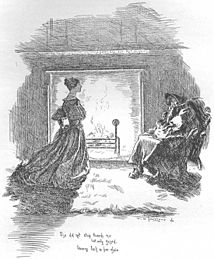| Cross-dressing |
|---|

Cross-dressing as a literary motif is well attested in older literature but is becoming increasingly popular in modern literature as well.[1] It is often associated with character nonconformity and sexuality rather than gender identity.[2]
- ^ Cite error: The named reference
garberwas invoked but never defined (see the help page). - ^ Craft-Fairchild, Catherine (1998-01-01). "Cross-Dressing and the Novel: Women Warriors and Domestic Femininity". Eighteenth-Century Fiction. 10 (2): 171–202. doi:10.1353/ecf.1998.0007. ISSN 1911-0243. S2CID 162232302.